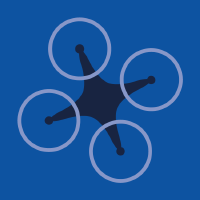Topic Menu
► Topic MenuTopic Editors





Applications of Big Data and Machine Learning in Smart Agriculture
Topic Information
Dear Colleagues,
Smart agriculture commonly integrates different innovative technologies such as sensors, global positioning systems (GPSs), big data analysis, the Internet of Things (IoT), machine learning, and robots on farms. It is experiencing a rapid transformation from both a product and service perspective. The main aim of smart agriculture is to reduce human effort, achieve greater food self-sufficiency, and make best use of available resources. In recent years, the evolution and progress of research in machine learning and big data happens in almost all domains of smart agriculture. The potential of machine learning to be considered as a catalyst for all given agriculture application models and the capacity of the study of big data to provide rich and multi-source data from the field scale to global scale offer a challenging background for scientific contributions and applied fields. This Topic will focus on the added value of the latest innovative methods and studies in the specified field, especially the estimation of growth status and yield based on multisource data and machine learning. Our interest focuses on the entire spectrum of applications of big data and machine learning in smart agriculture. The topics of interest include but are not limited to the following indicative list.
Prof. Dr. Xiuliang Jin
Dr. Hao Yang
Dr. Zhenhai Li
Dr. Changping Huang
Dr. Dameng Yin
Topic Editors
Keywords
- machine learning
- big data
- Internet of Things
- horticulture
- crops
- deep learning
- smart agricultural industry
- images process and fusion technology
- edge computing
- remote sensing
Participating Journals
| Journal Name | Impact Factor | CiteScore | Launched Year | First Decision (median) | APC |
|---|---|---|---|---|---|

Agriculture
|
3.6 | 3.6 | 2011 | 17.7 Days | CHF 2600 |

Agronomy
|
3.7 | 5.2 | 2011 | 15.8 Days | CHF 2600 |

Drones
|
4.8 | 6.1 | 2017 | 17.9 Days | CHF 2600 |

Horticulturae
|
3.1 | 2.4 | 2015 | 14.7 Days | CHF 2200 |

Remote Sensing
|
5.0 | 7.9 | 2009 | 23 Days | CHF 2700 |

Sensors
|
3.9 | 6.8 | 2001 | 17 Days | CHF 2600 |

MDPI Topics is cooperating with Preprints.org and has built a direct connection between MDPI journals and Preprints.org. Authors are encouraged to enjoy the benefits by posting a preprint at Preprints.org prior to publication:
- Immediately share your ideas ahead of publication and establish your research priority;
- Protect your idea from being stolen with this time-stamped preprint article;
- Enhance the exposure and impact of your research;
- Receive feedback from your peers in advance;
- Have it indexed in Web of Science (Preprint Citation Index), Google Scholar, Crossref, SHARE, PrePubMed, Scilit and Europe PMC.

